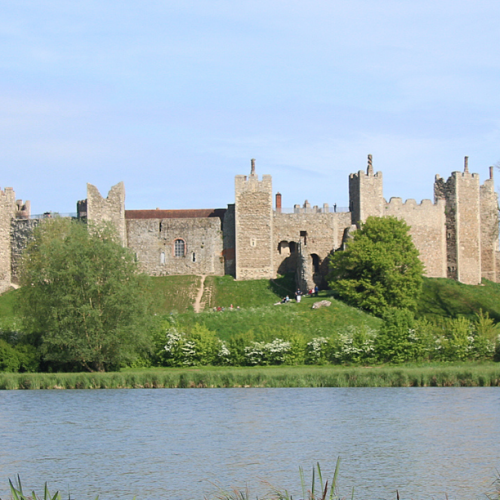Framlingham Castle IP13 9BP
Free for EH members
Open: Seasonal - See website
About:
Framlingham is a magnificent late 12th-century castle. Surrounded by parkland and estates, it was once at the centre of a vast network of power and influence. Explore its rich history and find out more about its journey from a Norman powerhouse to a 17th-century home for the poor.
Dog Friendly:
Dogs on leads permitted in the grounds and the castle, except the cafe counter. Assistance dogs welcome throughout site.
Entry Charge:
Variable prices (see website)
Parking:
Parking charges apply to non-members. Parking free for members. Car park is 300 metres from the entrance of the castle. Room for 30 cars on gravel.
Facilities:
Food and drink:
Our revamped café serves a range of Tudor-inspired dishes, locally sourced food and Suffolk specialities.
Picnic area:
You are welcome to bring a picnic to enjoy in the grounds. There are picnic benches outside the workhouse.
Shop:
Range of English Heritage gifts including selection of medieval themed souvenirs.
Toilets:
Toilets available on site, and an accessible toilet is located 300m from the site entrance, along a tarmac surface.
Museum:
Entry includes access to the Lanman Trust's Museum of local history.
Exhibition:
Discover the stories of the castle in the exhibition on the reinstated mezzanine level in the Workhouse. Get to know the castle's varied owners in the exhibition walkthrough, former residents included the famous Howard family and Mary Tudor who was proclaimed Queen of England at the castle in 1553. A game inspired by Duchess Margaret Brotherton challenges you to create plates of food and place them next to the class that would have eaten them in the 'Who Eats What?' game, or challenge the monarch by playing 'Spin the King' to see their fate. Try on everything from a Norman helmet to workhouse cap in the Hats Through the Ages dressing up section. The exhibition building was previously known as the poorhouse, but research has revealed that the Red House of 1664 and the adjacent stone building of 1729 were actually built as workhouses, places where the poorest members of the community carried out useful work in return for financial support, and later accommodation. Institutions like the Framlingham workhouse later gave way to the notoriously harsh workhouses of the Victorian age.
Gardens:
Visitors can explore the Mere, the castle’s outer courts and the wall-walk with its spectacular views over the surrounding countryside. Lots of space for children to run and play: kites allowed.
Notes:
There is no wheelchair access to the Roman site, and one step up into the museum building.
Contact:
Website: www.english-heritage.org.uk
Tel: 0370 3331181

